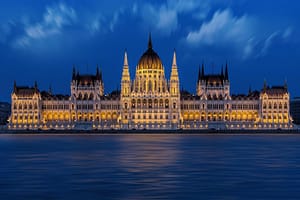The river Danube splits the city approxiately in half, with the west side called Buda and the east called Pest. Often described as the “Little Paris of Middle Europe”, Budapest is famous not only for the monuments reflecting its own 1,000-year-old culture, but also for the relics of others who settled here. Remains from both Roman occupation and much later ruled by the Turks can still be seen in the city. Suburban Buda and its historic castle district offer medieval streets and houses, museums, caves and Roman ruins. The dynamic Pest side boasts the largest parliament building in Europe, riverside promenades, flea markets, bookstores, antique stores and café houses. Budapest has a lot to offer. Museums and galleries, churches and synagogues, palaces and historic buildings, baths and pools are presented together with the influence of Secession in the city. There are more than 40 theaters and over 100 museums and galleries in the city. Many concerts, festivals and events are held year-round, not to mention performances at the famous Opera House, which is considered to be among the best opera houses in the world. Due to its scenic setting and its architecture it is nicknamed “Paris of the East”. In 1987 Budapest was added to the UNESCO World Heritage List for the cultural and architectural significance of the Banks of the Danube, the Buda Castle Quarter and Andrássy Avenue.

